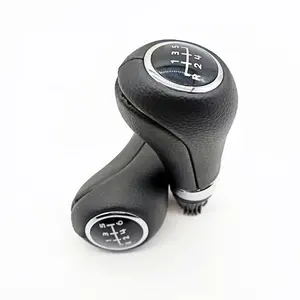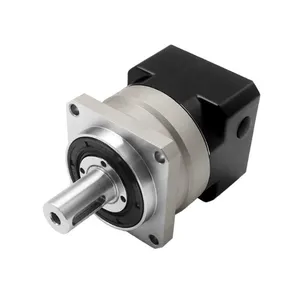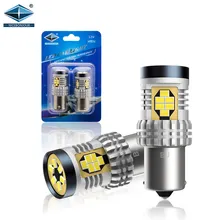An electronic gear shifter is a cutting-edge apparatus engineered to electronically control a vehicle's transmission gears. It surpasses traditional mechanical shifters by using electronic signals to communicate with the vehicle's transmission, providing a driving experience that is both more intuitive and responsive. Such innovation is swiftly becoming ubiquitous in contemporary automobiles, especially electric vehicles (EVs), where precision and efficiency are of the utmost importance.
Types of Electronic Gear Shifters
Varieties of electronic gear shifters abound, each tailored with distinct features to accommodate diverse vehicle models and driver predilections. Some are equipped with tactile buttons, others with touch-sensitive surfaces or joystick-like mechanisms. Sports cars, for example, may be fitted with paddle shifters behind the steering wheel for rapid gear transitions, while luxury vehicles might boast sleek, console-mounted selectors that prioritize comfort and ease. The array of designs serves the specific ergonomic and aesthetic demands of various automotive segments, ranging from commercial trucks with durable, simple shifters to premium automobiles with seamlessly integrated sophisticated controls.
Structure and Operation of Electronic Gear Shifters
The architecture of an electronic gear shifter is a testament to modern engineering, comprising electronic circuits, sensors, and actuators. Central to the system is the user interface, which relays signals to a control unit that deciphers the driver's commands and electronically actuates the transmission. This often results in gear shifts that are both swifter and more precise than manual counterparts. The elimination of a physical linkage to the transmission affords greater design flexibility in shifter placement, fostering innovative cabin layouts.
Materials and Their Properties
Selecting the right materials for an electronic gear shifter is crucial for its functionality and durability. High-strength steel and aluminum are chosen for their resilience and capacity to endure frequent usage. Aluminum alloys strike an optimal balance between weight and robustness, enhancing the vehicle's overall efficiency. ABS plastic offers not only longevity but also design versatility, enabling a spectrum of shapes and finishes that can integrate with any car interior. These materials are selected for their established track record in automotive applications, ensuring the shifter's reliability as well as meeting the aesthetic and tactile standards of consumers.
Business Usages and Applications
Electronic gear shifters are employed across the automotive sector, from utility fleets to opulent saloons. In commercial contexts, such as delivery trucks or buses, these shifters simplify driving, potentially diminishing driver fatigue and bolstering safety. In performance vehicles, the precision and swift response of electronic shifters are essential for superior driving dynamics. Their adaptability also makes them suitable for vehicles modified for drivers with disabilities, where ease of operation is critical. By refining the driving experience and vehicle command, electronic gear shifters deliver substantial business value and augment operational efficacy.
Functions of Electronic Gear Shifters
An electronic gear shifter is crafted to seamlessly select gears in an automated transmission system. It enables drivers to effortlessly switch between drive modes such as park, reverse, neutral, or drive. Certain advanced models also provide additional settings like sport or manual mode, offering drivers enhanced control over the vehicle's performance and handling characteristics.
Features of Electronic Gear Shifters
Key attributes of an electronic gear shifter include an ergonomic design aimed at maximizing comfort and minimizing the exertion of changing gears. Haptic feedback technology imparts a tactile engagement, simulating the sensation of conventional gear shifting. Safety mechanisms, such as automatic locks, prevent unintended gear shifts, while illuminated indicators improve visibility and user-friendliness under dim lighting conditions. These features distinguish electronic gear shifters from their mechanical forerunners and serve as major selling points in the automotive industry.
Benefits of Electronic Gear Shifters
The advantages of an electronic gear shifter are manifold. They contribute to a tidier and more spacious cockpit design, enhance vehicle safety with integrated lock-out mechanisms, and elevate the driving experience with fluid and responsive gear transitions. For enterprises, the dependability and diminished wear associated with electronic shifters can translate into reduced maintenance expenses and downtime, directly benefiting operational efficiency and profitability.
How to Use an Electronic Gear Shifter
Operating an electronic gear shifter is intuitive: the driver selects the desired gear through a button press, switch flip, or joystick movement, depending on the model. The system confirms the selection with feedback, often displayed on the dashboard. Drivers should acquaint themselves with their vehicle's specific shifter interface, as it can vary between models.
How to Choose the Right Electronic Gear Shifter
In choosing an electronic gear shifter, one must consider the vehicle type, the sought-after driving experience, and the ergonomics of the design. It is imperative to select a shifter that is compatible with the vehicle's transmission system and that prioritizes ease of use and dependability. Engaging with manufacturers on Alibaba.com can yield insights into the most fitting options available.
How to Clean and Maintain an Electronic Gear Shifter
Cleaning an electronic gear shifter entails gently wiping its surface with a soft, moist cloth to eliminate dust and dirt. Harsh chemicals should be avoided to prevent material damage. For maintenance, routine checks are advised to confirm the integrity of all electronic connections. Should issues emerge, professional servicing is recommended to preserve the shifter's optimal functionality and longevity.
How to Install an Electronic Gear Shifter
The installation of an electronic gear shifter is best performed by a certified technician. The procedure includes linking the shifter to the vehicle's electronic framework and verifying its proper communication with the transmission control unit. Correct installation is vital for the shifter's efficacy and safety.
What are the installation requirements for an electronic gear shifter?
Installing an electronic gear shifter necessitates a comprehensive grasp of the vehicle's electronic architecture. It typically involves integrating the shifter with the vehicle's transmission control unit (TCU) and configuring the software accurately. Professional installation is advocated to guarantee peak performance and to circumvent potential complications stemming from improper setup.
How does an electronic gear shifter enhance driving experience?
An electronic gear shifter augments the driving experience by ensuring smoother gear shifts, curtailing shift durations, and fostering a more engaged feel with the vehicle's performance. Its user-friendly design facilitates swift and effortless gear selection, which proves especially advantageous in scenarios demanding prompt action, such as overtaking maneuvers or ascents.
Are electronic gear shifters compatible with all vehicle types?
Although electronic gear shifters are adaptable to a broad spectrum of vehicles, their compatibility is not universal. It is essential to verify that the shifter is appropriate for the specific vehicle make and model, as well as the transmission type it employs. Most contemporary vehicles with automatic or semi-automatic transmissions are suitable for electronic gear shifter retrofitting, but professional advice or manufacturer consultation is always recommended to confirm compatibility.











































 浙公网安备 33010002000092号
浙公网安备 33010002000092号 浙B2-20120091-4
浙B2-20120091-4